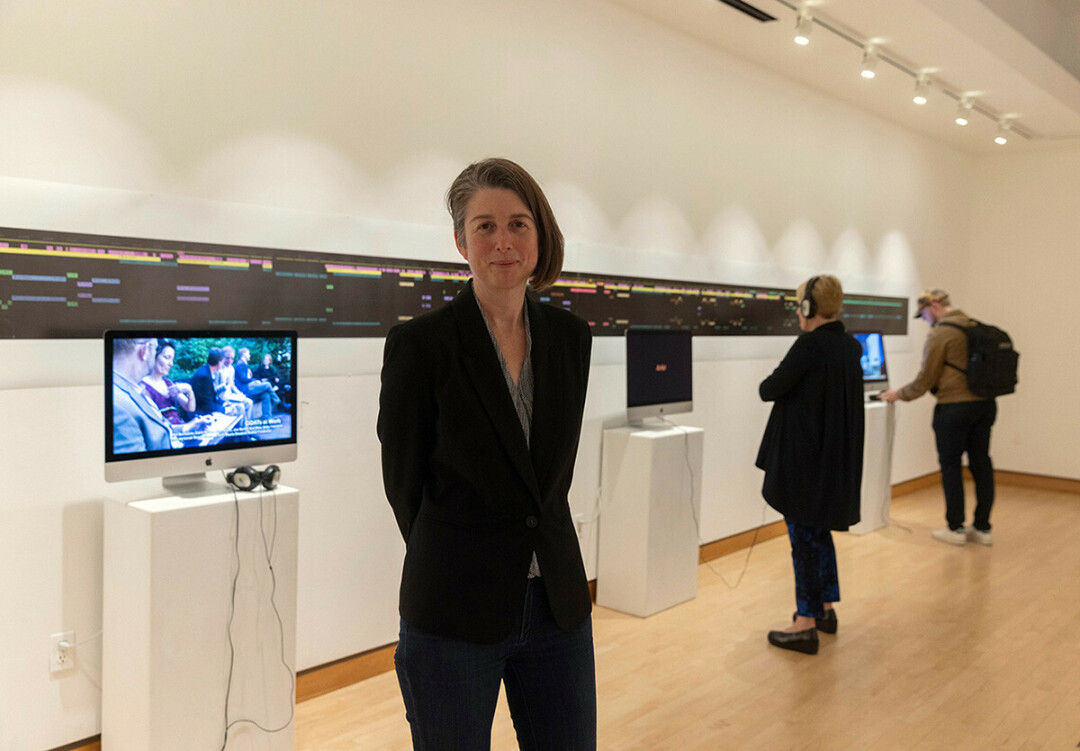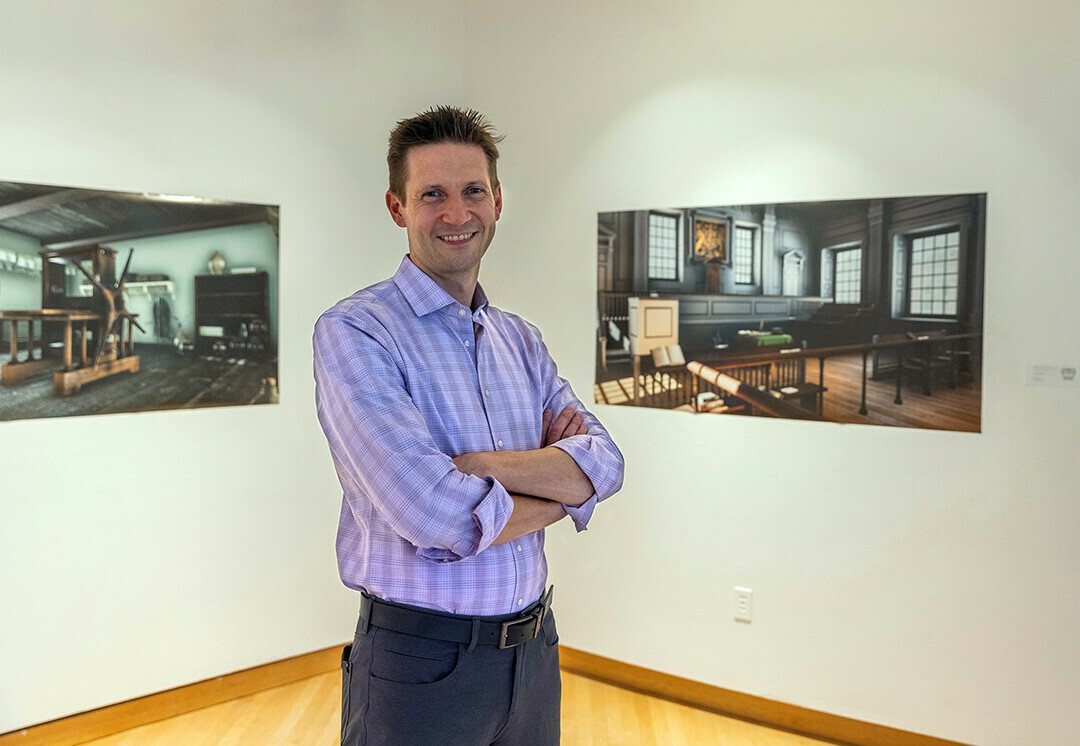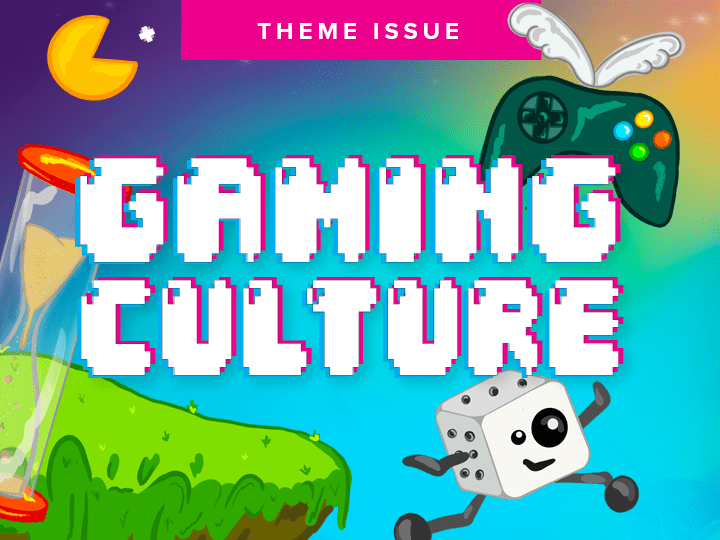THEY GOT GAMES: Madison Event Highlights UW-Stout’s Game Design Strengths
university representatives win three awards, lead presentations at M+DEV game development conference
Jerry Poling / UW-Stout Communications

In Wisconsin, where the advertising slogan “Got Milk?” is borderline a state motto, could people someday be asking, “Got game design?”
If the annual M+DEV game developers conference held recently in Madison can be used as a barometer, certainly the Badger State is moving in that direction. About 750 people from around the country attended to highlight and to build on strong industry connections that already exist.
One of the state’s game design connections is UW-Stout, which was well-represented at M+DEV and was a lead sponsor. Nearly 80 students, faculty, and alumni from the university’s nationally ranked game design programs attended. Students displayed seven of their games and several students, with alumni, led a panel discussion. Plus, a student – with a cow-based animation project – and a professor brought home the event’s three major art awards.

“We were well-recognized by industry, with many studios asking to be more involved with the university, such as Professional Advisory Boards and campus visits,” said Professor Andrew Williams, one of the art award winners.
Could Wisconsin really become a hotbed of game design? The Madison area already has satellite studios for major companies like Respawn, Activision Blizzard, Epic Games, Zenimax, Filament Games, Lost Boys Interactive, Human Head Studios, and Krafton.
Madison is “primed to be ‘the new epicenter’ of video game development in the United States,” according to the website Game Developer, quoting, M+DEV keynote speaker Ryan Burnett of Respawn, a subsidiary of Electronic Arts.
UW-Stout game design alumni working at companies in the Madison area and around the U.S. took part in the conference. Two students and alum joined Minneapolis-based developers to “lead one of the most polished and professional panels of the conference about building an audience for games. They organized the panel of multistate representatives from their professional network and provided solid takeaways. It was a highlight of the conference,” Williams said.
Associate Professor Kim Loken, director of the game design and development-art program, said UW-Stout alums in attendance also highlighted how their game design skills transfer seamlessly into other industries. “They represented a range of application of game development skills, organic modeling and 3D printing at Mayo Clinic; 3D modeling and product rendering at Trek (bicycles).”

Game design strength runs deep at UW-Stout. While Madison may be the center of Wisconsin’s place in the industry, UW-Stout’s degree programs are best positioned to supply the workforce talent. It’s the only state university to offer game design degrees in science and art.
A recent graduate from the game design-science program, Steve Datz, a Wisconsin native, started a game design company in Menomonie, Flying General Games.
Graduate students in the Master of Fine Arts in design program also can choose a game design focus. Recent MFA graduate Hue Vang was hired by DreamWorks Animation in Glendale, California, one of four alum at the company.
UW-Stout’s game design programs are ranked No. 1 in Wisconsin and No. 6 nationally among public universities.
Awards and Furlong Gallery exhibits
At M+DEV, UW-Stout had six faculty, 46 students and 25 alumni. Williams and Professor Erik Evensen, director of the MFA program, led a session titled Educational Perspectives in the Game Industry.
Student Aden Weisser, a sophomore from Milwaukee, won two of the major awards at M+DEV, People’s Choice and Best Animation, for her pixel art animation “Mooving Parts.” It’s a whimsical take on a dairy cow being manufactured by robots in a factory.
Williams was the art contest winner for the second straight year with his game environment image “Courthouse on Queen Street.” He used historical research to re-create an 18th century courtroom, no longer standing, that was used in the trials of British soldiers charged in the Boston Massacre of 1770. The image is part of “The American Revolution Series,” an episodic, historical video game that’s set in the years leading up to the Revolutionary War.

The game art is from a commercial project Williams worked on and is part of an exhibit at UW-Stout’s Furlong Gallery through Saturday, Dec. 16. The exhibit, “Alternate Histories,” presents game environments and level design that combine “historical research and current industry practice to present 18th century Boston in vivid detail,” he said.
Williams is the author of the book, “History of Digital Games.”
Loken also is exhibiting research at Furlong, “Works (and progress?).” Her “Legacy Project,” a series of oral histories and short documentaries, highlights the range of architectural practice of notable women in Minnesota. “Agri-block Typology” examines land stewardship in the context of a variety of problems and asks, “What is enough? Are we indeed making progress? thus inviting feedback and collaboration.”
Campus culture of game design, digital games
The M+DEV conference included an esports competition. One of the games played was Checkmight, released last spring at UW-Stout’s Game Expo, SGX, the largest game expo in western Wisconsin.
Checkmight was created by six students. The two-player game revolves around playing chess but with pieces that need to duel each other for every capture. Along with Checkmight, games demonstrated at M+DEV included Reapers Isle, Grape Juice City, Golfella, and Grazer.
The next Stout Game Expo, featuring many new student-designed games, will be 6 to 9pm on Wednesday, Dec. 13, at the Memorial Student Center. Along with digital games, students in game design also create traditional board and card games.
UW-Stout’s game design culture includes an official esports team, the first in the Universities of Wisconsin, and an esports coaching minor.
In addition, high school students interested in game design can explore a number of related areas – from 3D animation and video game design to digital storytelling – through UW-Stout’s summer STEAM experience.

